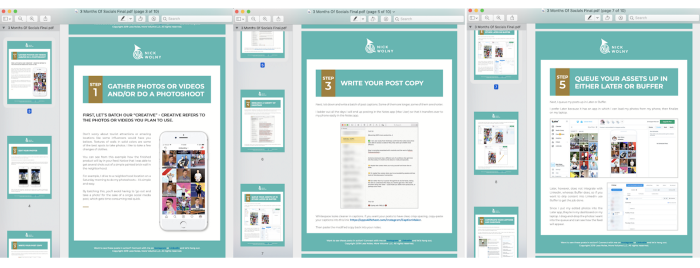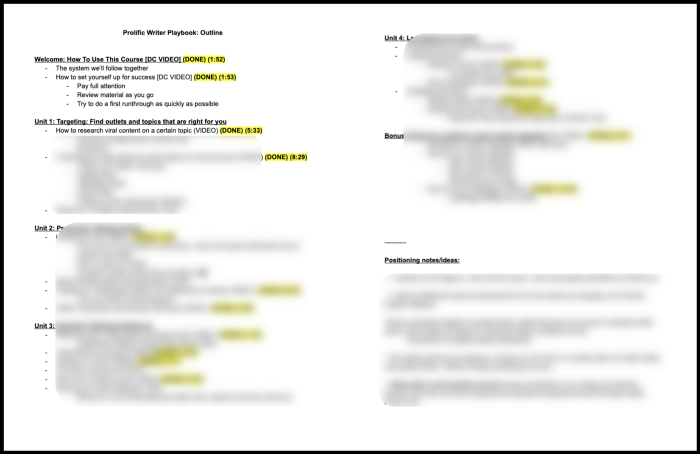Have you thought about launching an online course? Does the idea of packaging your knowledge into a resource people can give you money for while you sleep excite you? If the answer to either of those questions is yes, the first thing you’ll want to do is validate your online course idea.
When you validate your course idea, your motivation will spike. That’s because you’ll have identified a potential new stream of revenue and/or income.
Last month I shared about my experience launching an online course shortly after leaving my job. I had roadblocks and advantages when I first left.
How To Validate Your Online Course Idea - Post Outline
A roadblock was that I had no email list. However, an advantage I had was that I had just worked an agency job for over two years where I watched clients week in and week out fall on their faces because they didn’t know how to create content quickly.
I knew what knowledge and skills could help them. But did they know it? Would they know it if it was dropped right in front of them? That was the real question.
I’m in year one of my business, which means lots of research and lots of testing. Here are 3 things I’m doing regularly that will help you validate your online course ideas. Join me!
#1: Conduct Informational Interviews And Research
“I don’t know what my course topic should be!” If this is the question that stops you dead in your tracks, you’re not alone! Here are some foolproof action steps to get clear on whether you should persevere on a concept or go back to the drawing board.
Conduct informational interviews with people in your network. You will be amazed at what happens when you do some 15-20 minute calls with people and ask them about their problems. Here are some questions to ask in an informational interview:
- “When it comes to <INSERT TOPIC HERE>, what gets you stuck?”
- “What have you tried in the past to fix this problem?”
- “If this problem magically went away tomorrow, what would life be like for you?”
Also, if it’s appropriate, go ahead and ask:
- “What would you pay to have this problem taken away?”
When I am creating new content or new offerings, I like to do 15-20 calls with people in my network. It solves the problem of having to come up with new ideas, because their comments and feedback will clarify what solution to offer next. In creating my first online course, I asked the following on my Facebook profile:

When peers commented, I responded with open-ended questions to encourage them to go deeper and give me some whys. That process looked like this:

Confession: I even used this approach to write this article based on some comment threads happening in another article here on EH. Never hurts to ask! And I love being told what to do, personally -- less thinking required.

Then, I followed up with those who commented and asked if they’d be willing to get on a 15-minute call with me. That outreach was as follows, feel free to swipe the language:

I used Calendly as my appointment scheduler, and created a specific type of appointment for these calls. I filled my calendar with these appointments.

I recorded these calls and asked the questions listed above. Most importantly, I listened for trends and recurring pain points.
This process not only informed me what content and programs I should create next, but also what language I should use when promoting these assets so that the outcomes and benefits will resonate with busy business owners avatar.
“But Nick, what if I don’t have an audience yet?” No problemo! You can still research problems and brainstorm solutions. Here are two of my favorite workarounds:
- Go to Amazon, look up books about your topic, then look at the book reviews. Look at the glowing reviews, but also look at the critical reviews (The 2-4 star ones, not the 1-star ones that say things like “The UPS driver lost my package”). In the critical reviews, look for what reviewers wanted and did not get. Then brainstorm versions of the solution that would fully solve that reviewer’s problems.
- Go on online forums and see how people talk about your topic. Reddit and Quora are great places to start. What problems are being posted by users? How are their questions being answered? And how can you provide solutions that are better, faster, clearer, or easier?
Keep listening. When you pay close attention to how people talk about their problems, you’ll get sparks of insight on what solutions - and what content - to create next.
#2: Create A Logical Outline
If you were going to teach this course to your grandma, what steps would you need to explain and in what order?
Remember, you’re a seasoned expert who is entrenched in this work. You may need to take a few steps back to ensure your content is easy to consume. “This is how to turn on the computer, grandma” may need to come out of your mouth to produce results.
Consumers buy on emotion, but justify their purchase with logic. Content helps to seed logic in your future buyer’s mind. Buyers will tell themselves they’re buying on logic when they actually aren’t, but the only way for this to happen is to have presented logic prior to the sales pitch. Having a logical outline is all you need to start selling a course, honestly.
This same logic principle applies to lead magnets, too. Here’s a retired lead magnet from my social media consulting days that explained how to batch image-driven social media posts:

It’s boring, basic, simple, tired, obvious, elementary, and superficial. And it converted like a motherf***er.
That’s because I took the problems I overheard from my research and organized them into action steps in a logical order. The problems heard included
- "I can’t seem to get organized”
- “I never know what to write”
- “My photos are sometimes the wrong size”
- “I don’t know what social media scheduler to use”
- “Do hashtags even work?”
And so on.
So I collected these problems, and looked for the path of least resistance as to how you the reader could solve them. I came up with an outline that consisted of the following:
"Schedule Your Socials In 7 Easy Steps"
- Collect your photos and videos - your “media”
- Edit your media
- Write and store ALL your post captions
- Research relevant hashtags
- Upload your media into a social media scheduler
- Copy-paste your post captions and hashtags
- Cross-check links and schedule ‘em out!
Not rocket science. But clear! Clarity trumps persuasion.
This will take a hot second. But when you take the time to think through the logic that your reader will need to follow, your end result will be a course outline that is very attractive to your readers, listeners, or viewers.
For a course, your outline will be longer. But mine still came out to two pages for a 60-minute video course:

Creating a rigorous, logical outline makes production a snap, too. Just open your outline and record what it tells you to record.
#3: Solicit Feedback From Trusted Sources
Getting excited yet? Me too! Once you have a killer course outline, it’s best to get some feedback from trusted sources to polish it up and catch any blind spots.
For my mini-course, I got feedback from 4 trusted sources and revised my outline further. My sources are business owner friends, but not people who would be a target client of mine, so they give me the honest feedback I’m looking for.
Then I brought this outline to the peers I had done the informational interviews with, and let them know I was enrolling for the course beta and producing it. This is how you validate your course idea. You could do this with your email list as well. I didn’t have an email list at the time, so I solicited feedback and enrollment manually.
If you’ve hit on a pain point, and your outline delivers the goods, some of your interviewees will want in on your beta. Boom! This is how you know you’re onto something, and it’s time to move forward.
If you hear crickets, see what feedback your past interviewees are giving you and pivot accordingly. “Oh, that sounds nice, very cute” is not product validation. “Can I join right now?” means you’ve hit on something.
---------------------
Normalize this process. If you’re going to play in the online course space, you’ll want to do this work often, especially as we navigate a pandemic, because your market’s wants and needs may be rapidly changing.
Let the behavior and words of your audience make the decision for you. Hope this helps!
Thanks for reading. 🙏🏼
Keep up the momentum with one or more of these next steps:
📣 Share this post with your network or a friend. Sharing helps spread the word, and posts are formatted to be both easy to read and easy to curate – you'll look savvy and informed.
📲 Hang out with me on another platform. I'm active on Medium, Instagram, and LinkedIn – if you're on any of those, say hello.
📬 Sign up for my free email list. This is where my best, most exclusive and most valuable content gets published. Use any of the signup boxes in this article, or go to the newsletter page here.
🏕 Up your marketing game: Camp Wordsmith™ is my business and writing program for small business owners and online entrepreneurs. Get instant access to resources and templates guaranteed to make your marketing hustle faster, better, easier, and more fun. (It's also "glamping"-themed – who doesn't love luxurious camping?!) Learn more here.
📊 Hire my marketing company: Hefty Media Group provides consultation and done-for-you services in content marketing. We're a certified diversity supplier with the National Gay & Lesbian Chamber of Commerce, and we'll make you sound damn good via the written word. Learn more here.
© 2021, 2022, Hefty Media Group. All Rights Reserved.


